History of CAT
Installing the first water turbine at CAT




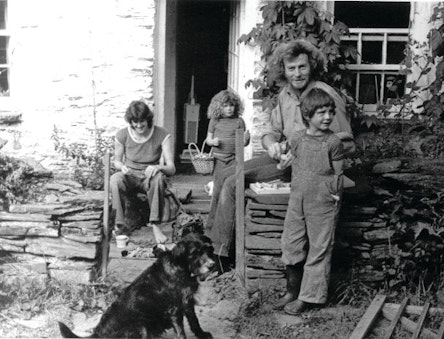



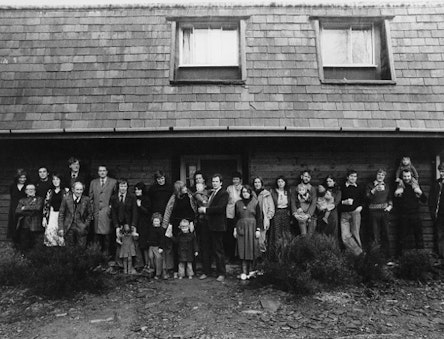
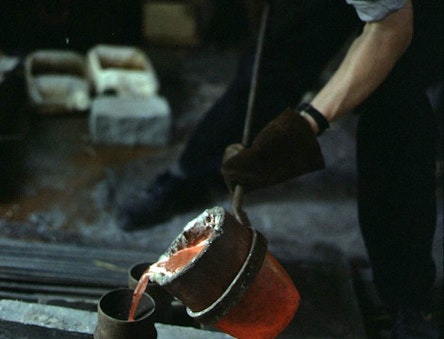
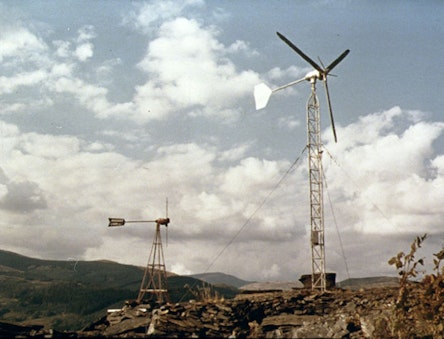


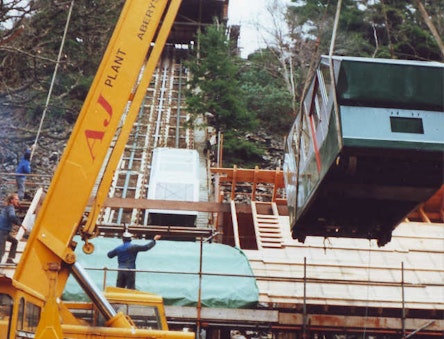

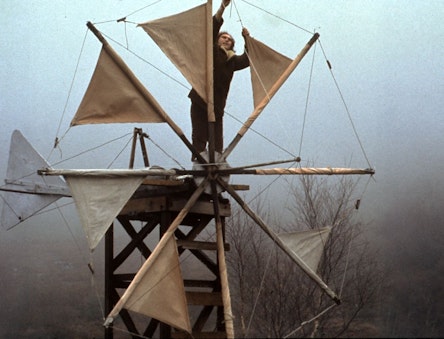

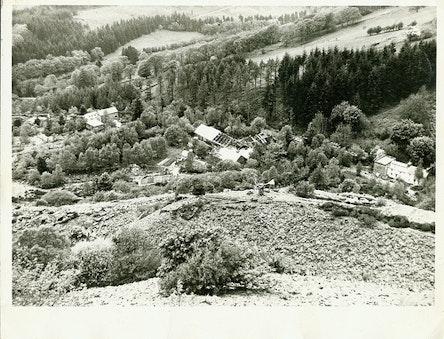


Founded in 1973 on the disused slate quarry Llwyngwern, the Centre for Alternative Technology (CAT) has come along ways since our humble beginnings.
Now as you wander around the green buildings, organic gardens and woodlands it’s hard to picture that 50 years ago most of the site was a pile of rubble from the slate quarry.
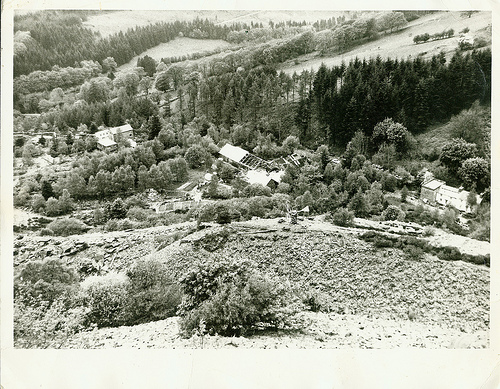
Read the displays around the site to learn about the history of Llwyngwern quarry and about what things were like here before CAT was founded.
On dry days this is well worth a visit. Aside from being able to wander through beautiful woodlands you’ll also get to see the remains of what was once here, as you’ll see buildings, the remains of machinery, not to mention the quarry itself.
Read more about the quarry trail
Since the early days CAT aimed to not just show the environmental issues but to focus on bringing together, testing and showcasing new technologies, energy solutions and ‘green’ building techniques.
The visitor centre was first established in 1975 and allowed CAT to show more and more people our vision for a more sustainable future. For many, visiting CAT would have been the first time they’d seen ‘alternative technology’ such as wind turbines and photovoltaic solar panels in action, and it gave CAT a broader platform as we sought to show that a sustainable society is possible.

CAT also spread this message to the government when, in 1977, we put together An Alternative Energy Strategy for the UK and delivered it to Tony Benn’s Ministry of Energy.
Since the early days CAT has worked with schools, school groups and visitors, providing education on a wide array of topics related to sustainability. But in recent years education has become more of a focus, rather than experimenting with and testing new alternative technologies.
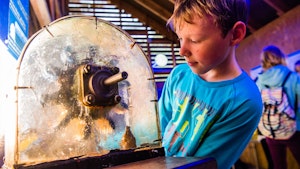
In part this reflected where we are as a society. The technologies to tackle climate change exist; the issue is that we haven’t collectively made the changes we need to.
CAT’s vision is for a world where we all tread lightly on the planet.
To help our society become more sustainable we aim to inspire, inform people through our visitors centre and short courses, graduate school to enable and equip people with the skills, knowledge and understanding to bring about the changes needed.
A better future is possible, but we’ll all need to help create it.
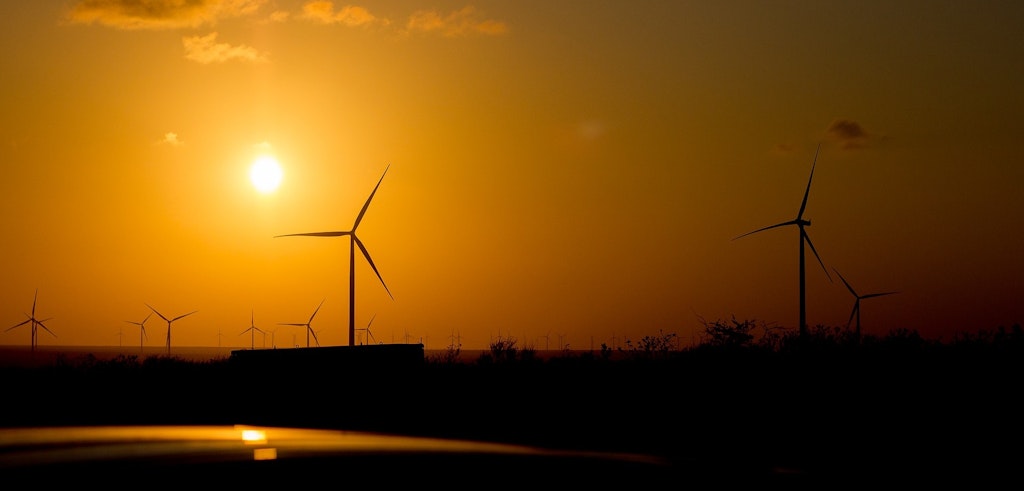




















| Cookie | Duration | Description |
|---|---|---|
| cookielawinfo-checkbox-advertisement | 1 year | Set by the GDPR Cookie Consent plugin, this cookie is used to record the user consent for the cookies in the "Advertisement" category . |
| cookielawinfo-checkbox-analytics | 11 months | This cookie is set by GDPR Cookie Consent plugin. The cookie is used to store the user consent for the cookies in the category "Analytics". |
| cookielawinfo-checkbox-functional | 11 months | The cookie is set by GDPR cookie consent to record the user consent for the cookies in the category "Functional". |
| cookielawinfo-checkbox-necessary | 11 months | This cookie is set by GDPR Cookie Consent plugin. The cookies is used to store the user consent for the cookies in the category "Necessary". |
| cookielawinfo-checkbox-others | 11 months | This cookie is set by GDPR Cookie Consent plugin. The cookie is used to store the user consent for the cookies in the category "Other. |
| cookielawinfo-checkbox-performance | 11 months | This cookie is set by GDPR Cookie Consent plugin. The cookie is used to store the user consent for the cookies in the category "Performance". |
| JSESSIONID | session | Used by sites written in JSP. General purpose platform session cookies that are used to maintain users' state across page requests. |
| viewed_cookie_policy | 11 months | The cookie is set by the GDPR Cookie Consent plugin and is used to store whether or not user has consented to the use of cookies. It does not store any personal data. |
| Cookie | Duration | Description |
|---|---|---|
| _gat_UA-9561970-114 | 1 minute | A variation of the _gat cookie set by Google Analytics and Google Tag Manager to allow website owners to track visitor behaviour and measure site performance. The pattern element in the name contains the unique identity number of the account or website it relates to. |
| Cookie | Duration | Description |
|---|---|---|
| _ga | 2 years | The _ga cookie, installed by Google Analytics, calculates visitor, session and campaign data and also keeps track of site usage for the site's analytics report. The cookie stores information anonymously and assigns a randomly generated number to recognize unique visitors. |
| _gat_gtag_UA_9561970_21 | 1 minute | Set by Google to distinguish users. |
| _gcl_au | 3 months | Provided by Google Tag Manager to experiment advertisement efficiency of websites using their services. |
| _gid | 1 day | Installed by Google Analytics, _gid cookie stores information on how visitors use a website, while also creating an analytics report of the website's performance. Some of the data that are collected include the number of visitors, their source, and the pages they visit anonymously. |
| _s | 30 minutes | This cookie is associated with Shopify's analytics suite. |
| _shopify_s | 30 minutes | This cookie is associated with Shopify's analytics suite. |
| _shopify_y | 2 years | This cookie is associated with Shopify's analytics suite. |
| _uetsid | 1 day | This cookies are used to collect analytical information about how visitors use the website. This information is used to compile report and improve site. |
| _y | 2 years | This cookie is associated with Shopify's analytics suite. |
| CONSENT | 16 years 2 months 24 days 15 hours | YouTube sets this cookie via embedded youtube-videos and registers anonymous statistical data. |
| iutk | 5 months 27 days | This cookie is used by Issuu analytic system. The cookies is used to gather information regarding visitor activity on Issuu products. |
| Cookie | Duration | Description |
|---|---|---|
| IDE | 1 year 24 days | Google DoubleClick IDE cookies are used to store information about how the user uses the website to present them with relevant ads and according to the user profile. |
| mc | 1 year 1 month | Quantserve sets the mc cookie to anonymously track user behaviour on the website. |
| MUID | 1 year 24 days | Bing sets this cookie to recognize unique web browsers visiting Microsoft sites. This cookie is used for advertising, site analytics, and other operations. |
| test_cookie | 15 minutes | The test_cookie is set by doubleclick.net and is used to determine if the user's browser supports cookies. |
| VISITOR_INFO1_LIVE | 5 months 27 days | A cookie set by YouTube to measure bandwidth that determines whether the user gets the new or old player interface. |
| YSC | session | YSC cookie is set by Youtube and is used to track the views of embedded videos on Youtube pages. |
| yt-remote-connected-devices | never | YouTube sets this cookie to store the video preferences of the user using embedded YouTube video. |
| yt-remote-device-id | never | YouTube sets this cookie to store the video preferences of the user using embedded YouTube video. |
| Cookie | Duration | Description |
|---|---|---|
| _uetvid | 1 year 24 days | No description available. |
| CHECKFRONT_APP | session | No description |
| paymentLog | 7 days | No description |
| PHPSESSID-US | session | No description |
| RES | session | No description |
